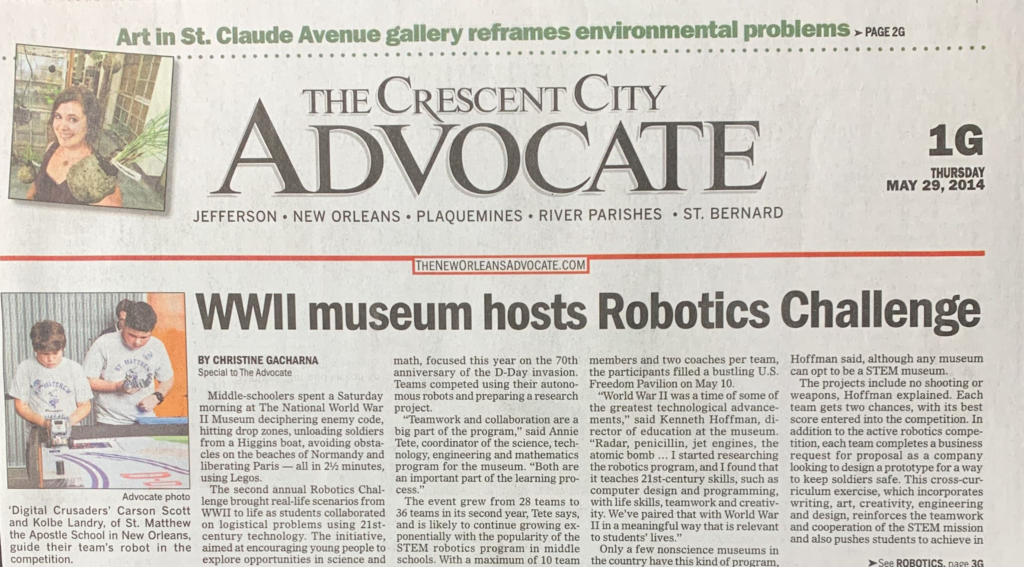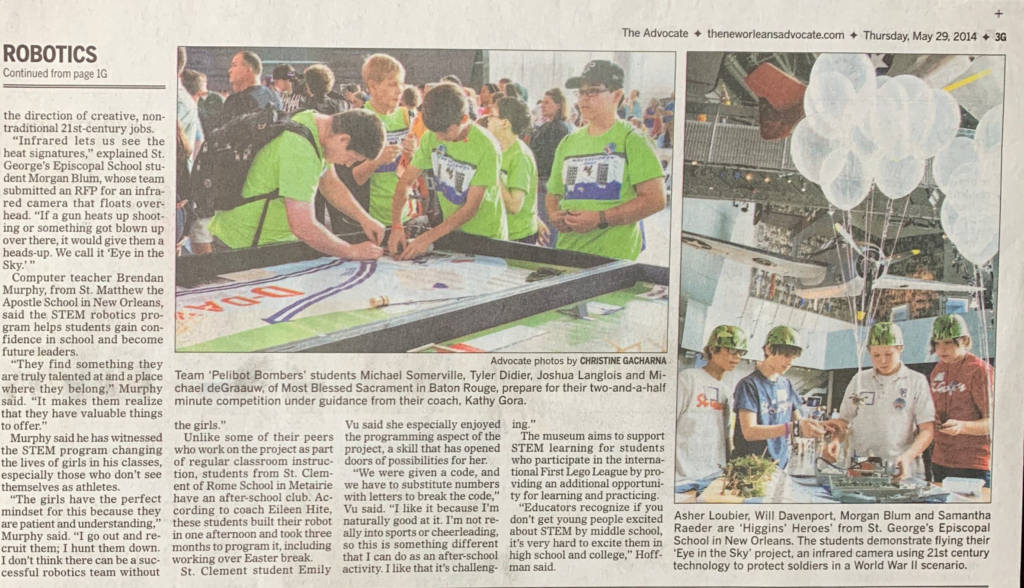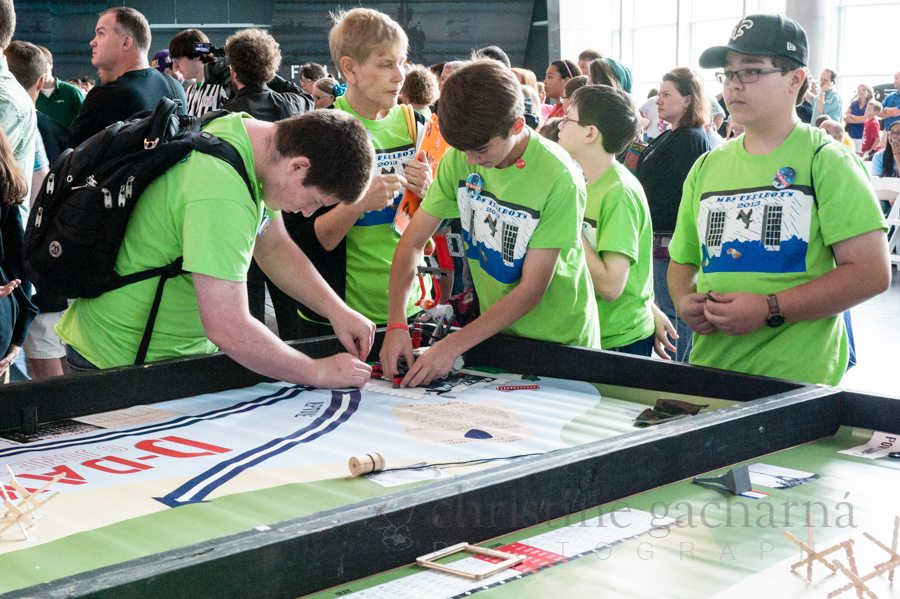WWII Museum hosts Robotics Challenge

Middle schoolers spent a Saturday morning at The National WWII Museum deciphering enemy code, hitting drop zones, unloading soldiers from a Higgins boat, avoiding obstacles on the beaches of Normandy, and liberating Paris — all in two-and-a-half minutes using Legos.
The Second Annual Robotics Challenge brought real-life scenarios from WWII to life as students collaborated to problem solve logistics using 21st Century technology. The initiative, aimed at encouraging young people to explore opportunities in science and math, focused this year on the 70th anniversary of the D-Day invasion. Teams competed using their autonomous robots and preparing a research project.
“Teamwork and collaboration are a big part of the program,” says Annie Tete, coordinator or the Science, Technology, Engineering and Mathematics (STEM) program for the museum. “Both are an important part of the learning process.”
The event grew from 28 teams to 36 teams in its second year, Tete says, and expects to continue growing exponentially with the popularity of the STEM robotics program exploding in middle school curriculum. With a maximum of 10 team members and 2 coaches per team, the number of students involved filled a bustling US Freedom Pavilion on May 10.
“World War II was a time of some of the greatest technological advancements,” says Kenneth Hoffman, director of education at the museum. “Radar, penicillin, jet engines, the atomic bomb … I started researching the robotics program and I found that it teaches 21st Century skills such as computer design and programming with life skills, teamwork, and creativity. We’ve paired that with World War II in a meaningful way that is relevant to students’ lives.”
The New Orleans museum is one of few non-science museums in the country to have this kind of program, Hoffman says, although any museum can opt to be a STEM museum.
There’s never any shooting or weapons incorporated into the designs, Hoffman explains. Each team gets two chances, their best score entered into the competition. In addition to the active robotics competition, each team completes a business RFP (Request for Proposal) as a company looking to design a prototype for a way to keep soldiers safe. This cross-curriculum exercise, which incorporates writing, art, creativity, engineering, and design, reinforces the teamwork and cooperation of the STEM mission and also pushes students to achieve in the direction of creative, non-traditional 21st Century jobs.
“Infrared lets us see the heat signatures,” explains St. George’s Episcopal School student Morgan Blum, whose team submitted an RFP for an infrared camera that floats overhead. “If a gun heats up shooting or something got blown up over there, it would give them a heads-up. We call it ‘Eye in the Sky.'”
Computer teacher Brendan Murphy from Saint Matthew the Apostle School in New Orleans says he watches the STEM robotics program literally help kids find their niche to gain confidence in school and become future leaders.
“They find something they are truly talented at and a place where they belong,” Murphy says. “It makes them realize that they have valuable things to offer.”
Murphy goes on to explain how he has witnessed the STEM program literally changing the lives of young girls in his classes, especially those who aren’t aligned with an athletic identity.
“The girls have the perfect mindset for this because they are patient and understanding,” Murphy says, “I go out and recruit them, I hunt them down. I don’t think there can be a successful robotics team without the girls!”
Unlike some of their peers who work on the project as part of regular classroom instruction, students from St. Clement of Rome School in Metairie are an after-school club. According to coach Eileen Hite, these students built their robot in one afternoon and took three months to program it, including working over Easter break.
St. Clement student Emily Vu says she especially enjoyed the programming aspect of the project, a skill that has opened doors of possibilities for her.
“We were given a code, and we have to substitute numbers with letters to break the code,” Vu explains. “I like it because I’m naturally good at it. I’m not really into sports or cheerleading, so this is something different that I can do as an after-school activity. I like that it’s challenging.”
The museum aims to support STEM learning for students who participate in the international First Lego League by providing an additional opportunity for learning and practicing.
“Educators recognize if you don’t get young people excited about STEM by middle school, it’s very hard to excite them in high school and college,” Hoffman says.
Published in The New Orleans Advocate, May 29, 2014.







